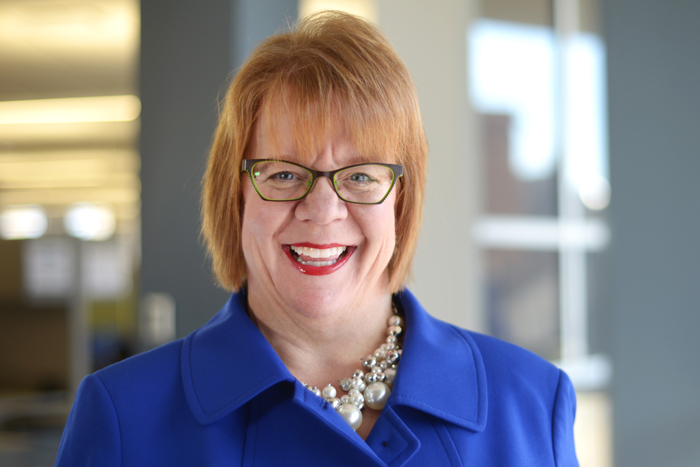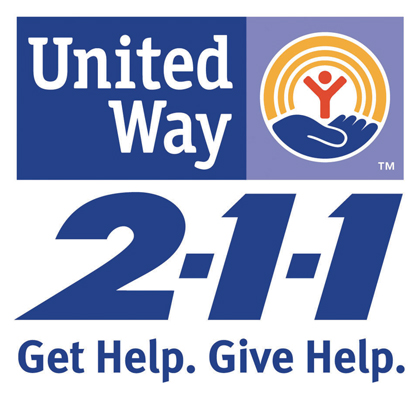
As published in the September 1, 2016 Toledo Business Journal

Karen Mathison
United Way of Greater Toledo
Partner decision benefits United Way 2-1-1
Local jobs retained and
$500k being invested annually
United Way of Greater Toledo has entered into a partnership with United Way of Greater Cleveland involving the 2-1-1 program. The following interview with Karen Mathison, president and CEO, United Way of Greater Toledo, examines the business decision that led to this partnership, key benefits obtained, and community impact issues resulting from this action.
Toledo Business Journal: Explain the United Way of Greater Toledo 2-1-1 program?
Karen Mathison: United Way 2-1-1 is a 24/7 information and referral service of United Way of Greater Toledo, serving Lucas, Wood, and Ottawa counties. By dialing 2-1-1, callers are referred to resources that connect them to food, housing, utility assistance, volunteer opportunities, and more.
TBJ: Can you discuss the decision to outsource the management of this program to United Way of Greater Cleveland?
KM: As with other local businesses across our region, it is vital that United Way continues to be innovative and nimble in strengthening our results in community. The decision to partner with United Way of Greater Cleveland came after months of due diligence in looking at other models across the country as well as exploring the option to continue to operate 2-1-1 and Coordinated Access in house. The United Way of Greater Toledo staff leadership and board of directors determined that locally we can be more effective and efficient in our resources available by forming this partnership with United Way of Greater Cleveland and at the same time deepen the quality of service.
TBJ: What impact will this have on local jobs?
KM: United Way of Greater Toledo employed 18 employees in 2-1-1 and Coordinated Access with the majority of them being part-time positions. All of these employees were given an opportunity to apply and complete the interview process with United Way of Greater Cleveland. As of August 1, 14 of those employees are now employed by United Way of Greater Cleveland. With the exception of 1 full-time employee hired, 13 of them are continuing to live and reside in the Toledo area and are all working remotely from their home, answering 2-1-1 calls from residents in Lucas, Wood, and Ottawa counties. One position as I stated above, is relocating to work out of the United Way of Greater Cleveland office.

TBJ: How will call center employees in the future be familiar with local support resources in northwest Ohio and be aware of local issues?
KM: The database that United Way of Greater Toledo and Greater Cleveland uses is the same. Just like before August 1, staff now employed by United Way of Greater Cleveland are maintaining and updating the local resources available for services across our three-county region. In addition, as before, one full-time staff person is sitting at community meetings and coalitions to continue to build the database and strengthen local relationships with service providers. We recognize that a robust 2-1-1 database is important across all three counties and we encourage organizations, including the faith community to update us as new programs are available.
TBJ: Can you discuss benefits of the decision to involve the resources of United Way of Greater Cleveland to manage this program?
KM: United Way of Greater Cleveland provides more robust technology available for our local callers. By the end of the year, they are rolling out text and chat capabilities. Additionally, because United Way of Greater Cleveland is a strong local United Way like United Way of Greater Toledo, together we build a stronger infrastructure. United Way of Greater Cleveland has the ability and the resources available to answer the phone in less time and more frequently than our current available resources. Locally, Lucas, Wood, and Ottawa County callers and United Way of Greater Toledo are getting a higher return on their investment with us and higher levels of service. At the same time, United Way of Greater Toledo is able to re-invest the annual cost-savings of this new partnership into other local programing that is addressing local needs in our community. United Way of Greater Cleveland has also partnered with other local United Ways across eastern Ohio seamlessly in the past in similar partnerships.
TBJ: What impact will this decision have on the limited management and financial resources of United Way of Greater Toledo?
KM: This decision is smart and strategic for our community, 2-1-1 callers, and United Way of Greater Toledo. We remain deeply committed to 2-1-1 and Coordinated Access across our three-county footprint. We are investing nearly $500,000 annually into 2-1-1 and Coordinated Access with United Way of Greater Cleveland. This new partnership provides for local reporting, local accountability, and local residents working from their home here in our communities answering the calls from local callers. Together, with United Way of Greater Cleveland, we are proud of bringing this strong partnership to our community to sustain and strengthen a critical program.
TBJ: Can you share a couple of examples of support provided by the 2-1-1 program?
KM: Last year alone, United Way 2-1-1 received more than 27,000 requests from local residents seeking food for their families. In total we take in more than 115,000 calls annually. United Way 2-1-1 is a great resource for all of us. United Way 2-1-1 helps us all answer the questions that life throws our way: Where can I find food for my family? Where can I volunteer with my children on weekends? How can I find help in paying for rent? My mom was just diagnosed with this chronic disease, is there a support group nearby for us to attend? My family and I are about to be evicted, where can we stay until we’re back on our feet? We’re expecting a baby soon, where can I find good quality daycare for my child when I return to work?
TBJ: Are there any other issues that you would like to address?
KM: United Way of Greater Toledo fights for the education, health, and financial stability of every person across Lucas, Wood, and Ottawa counties. It is only by working together that the big issues impacting our community can be solved: kindergarten readiness, poverty, student success, and healthcare access, to name a few of our key community issues. So, together we bring all sectors of the community together to craft a plan, find the gaps and invest resources, measure progress, and share results. Living United is the best way for our local community to prosper. We are proud to be in partnership with all sectors of the community. Together, we can accomplish what we can never do on our own. That’s what it means to Live United.